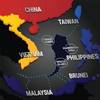Maersk Expects Tanker Market to Improve
Maersk Product Tankers A/S said that the product tanker market, which was challenging in 2018 is expected to improve from the end of 2019.
The company that transports refined oil products through its product tankers vessel fleet said in a press release that while fleet growth had slowed significantly over the previous two years, the market remained heavily oversupplied.
Product trade demand growth was positive, but below historical ranges. As a result, product tanker freight rates fell. This decline, combined with high fuel prices, depressed industry earnings, reaching lows not experienced since the 2008/9 financial crisis.
After hitting near record lows in the third quarter of 2018, however, the market rallied in the fourth quarter. This was caused by a large increase in US crude production and exports, which coincided with reduced Iranian oil supply, prompting Asian refiners to buy supplies from long-haul sources in the Atlantic.
The strong crude carrier market led owners to switch from clean to dirty products, which ultimately reduced the overall clean product fleet. The confluence of rising demand and shrinking supply also coincided with lower fuel costs which led to the high freight rates achieved at the end of the year.
On the demand side, trade is expected to increase sharply, driven by the advent of the new IMO 2020 sulphur regulations. The regulations will require a major reconfiguration of the global refining infrastructure and logistics to meet blending demand for compliant marine fuels.
Moreover, we see the market being structurally short of diesel and marine gasoil and the refining industry will likely see a step change increase in refinery output to meet marine fuel demand. With this comes increased output of other fuels, which will need to be priced into the market, the clear majority of which will be carried by product tankers. As a result, we see an upward trajectory in demand, starting from the end of 2019.
The trade impact from new sulphur regulations could ultimately benefit the full range of product tankers, as both intra- and interregional trade is stimulated. The larger LR2s and MRs will benefit from growth of inter-regional trade from the Middle Eastto Europe and Asia, while the smaller Handy and Intermediates will benefit more from the intra-regional trade growth within Asia and Europe.
An increase in greenfield refining capacity in the Middle East as Asia will also spur growth of trade in 2019.
At the same time, global fleet supply growth is expected to flatten because of increased scrapping of older tonnage, a result of the last few years of low earnings, combined with the increased capital expenditure required to remain competitive in the market with impending new environmental regulations. Furthermore, deliveries of new vessels are expected to remain below historical norms, as the product tanker order book is historically low.
With slowing vessel supply growth and vessel demand expected to rise, product tanker freight rates are projected to increase, starting at the end of 2019.










